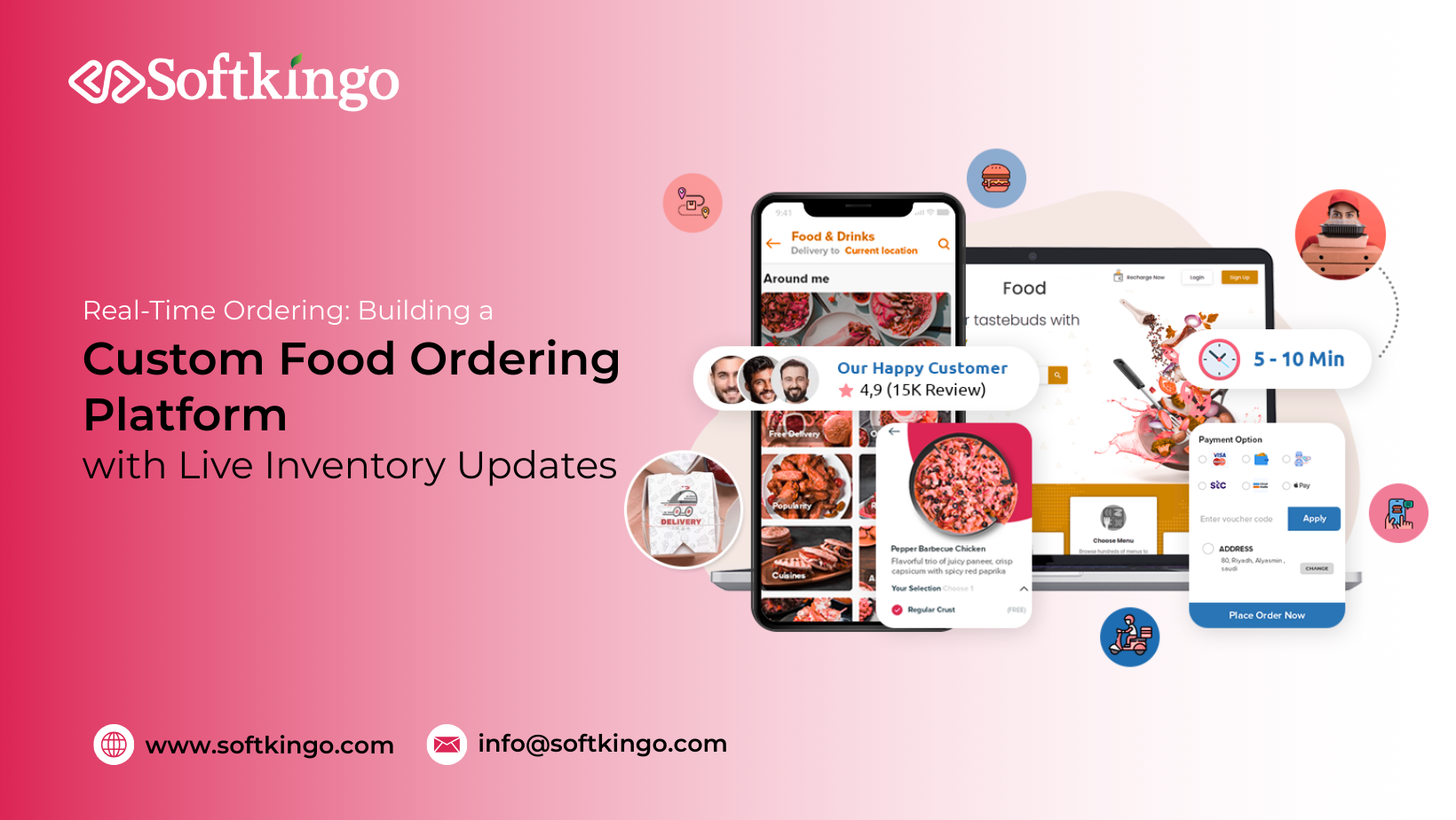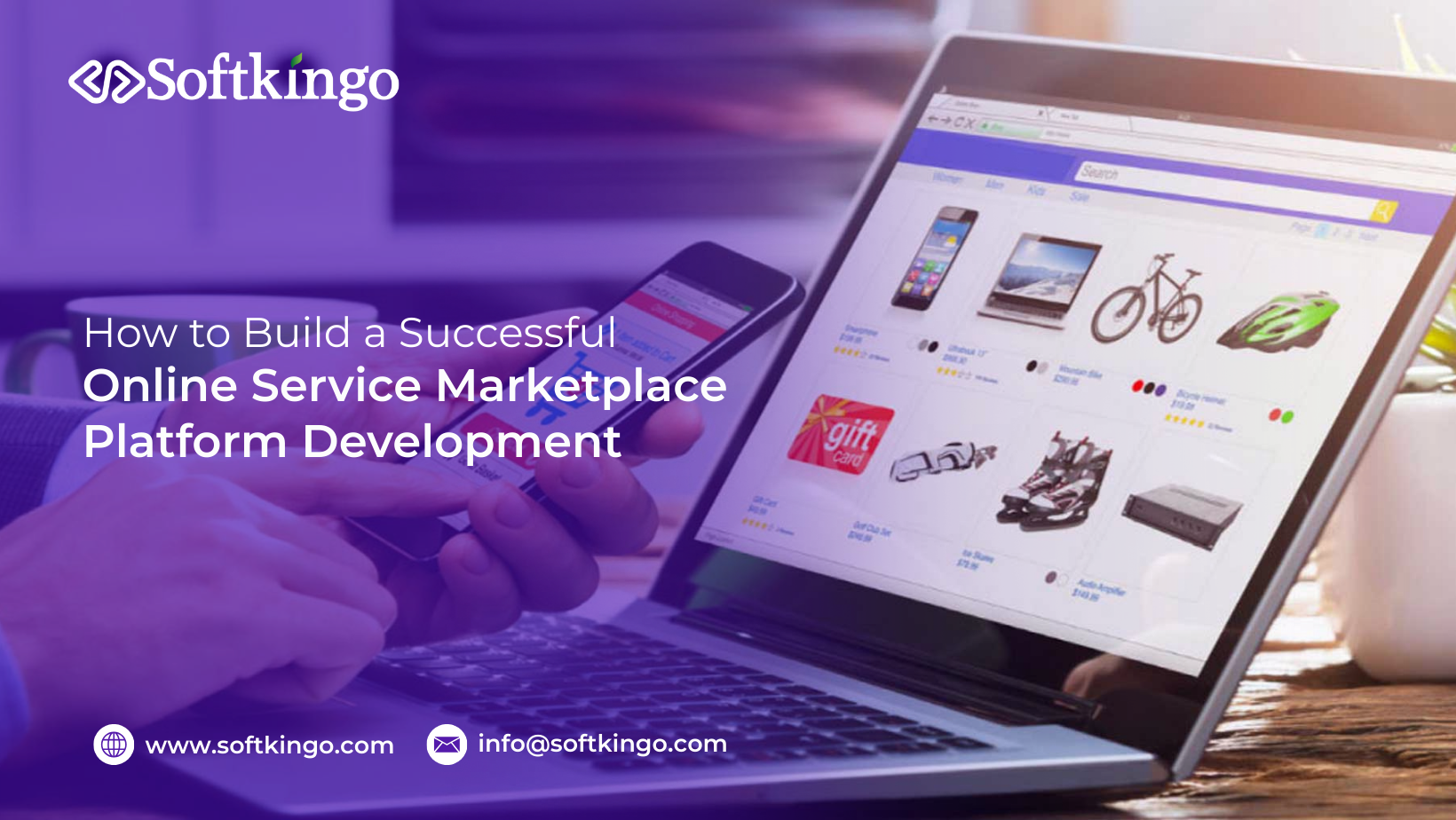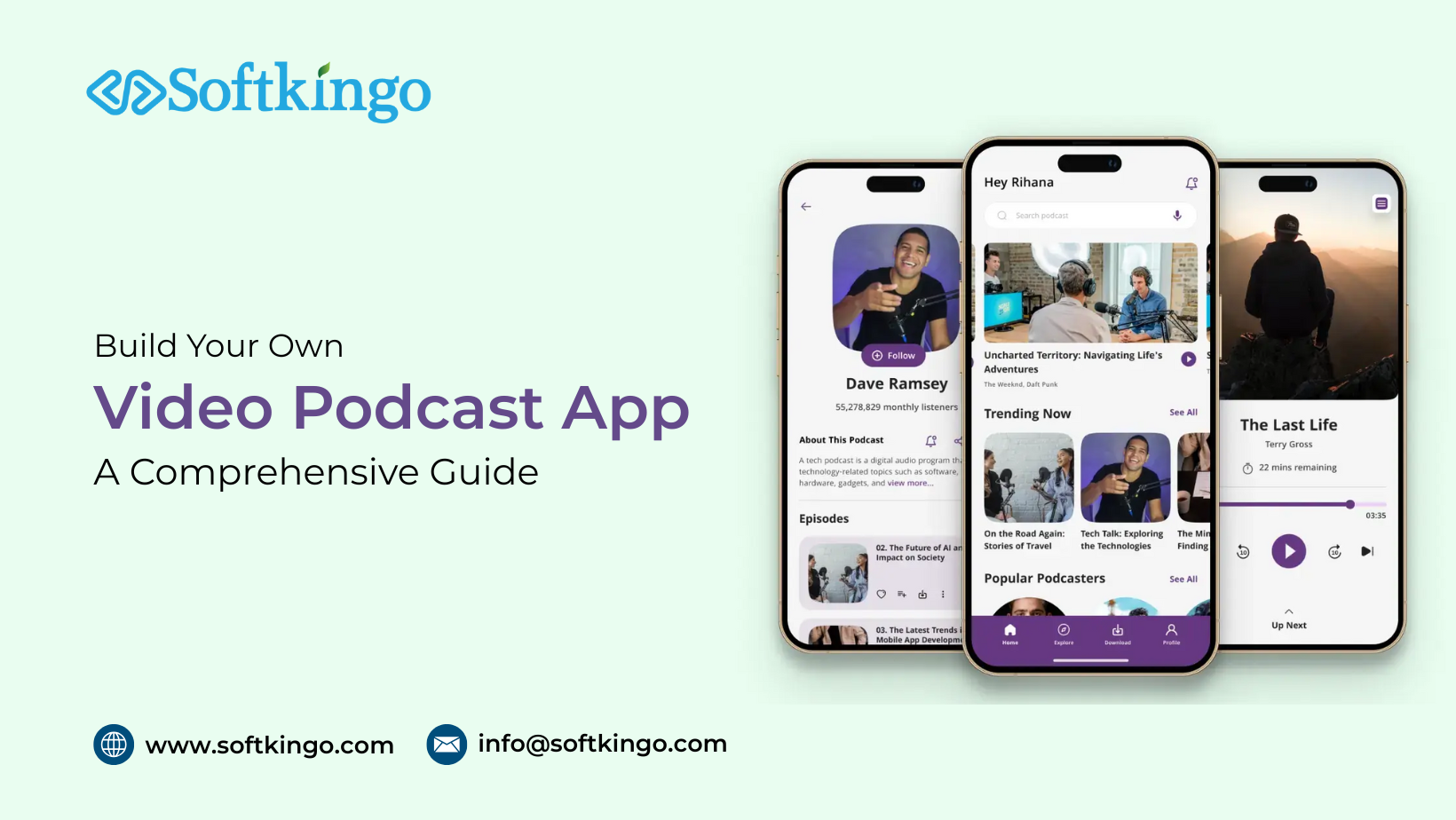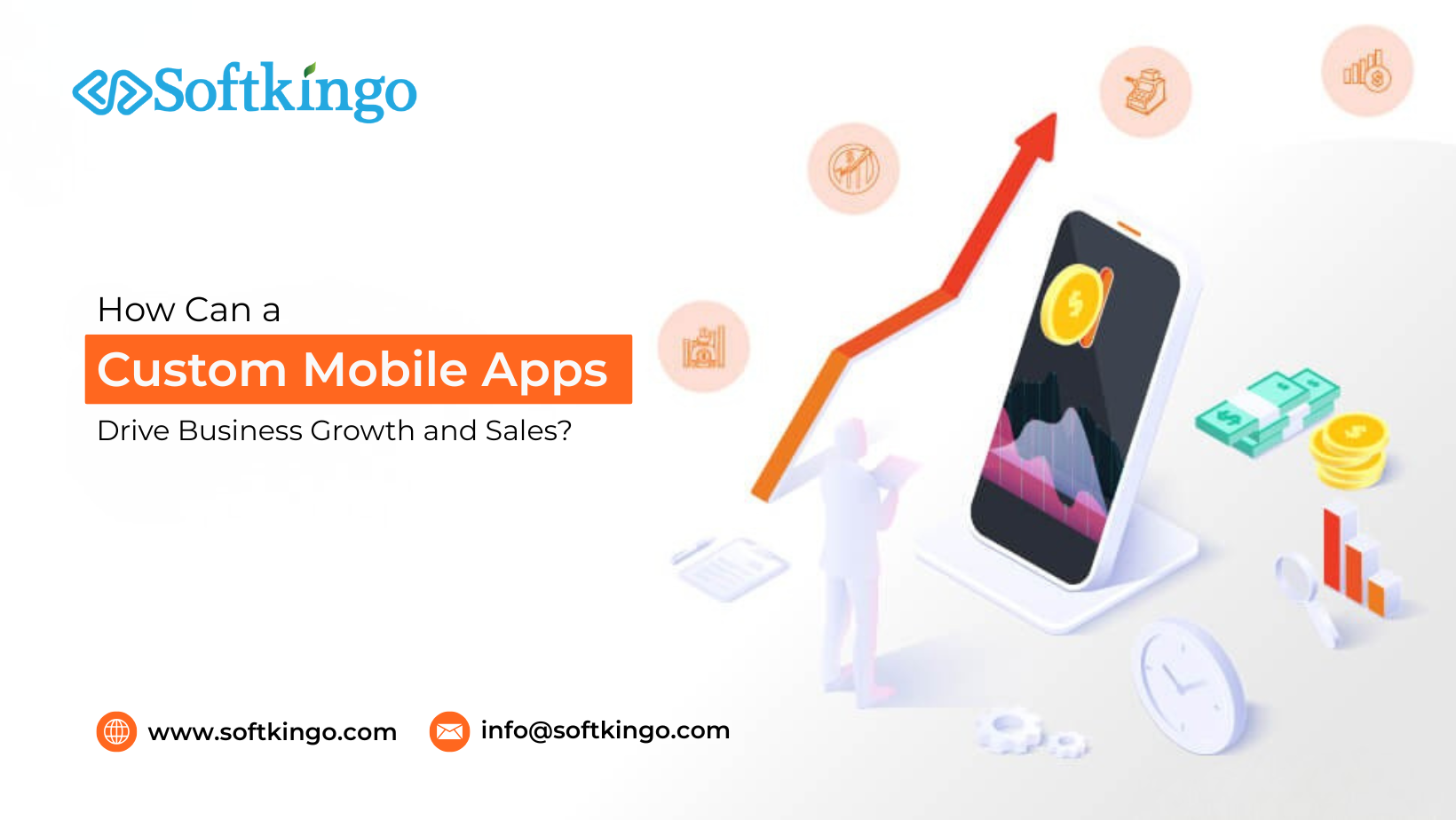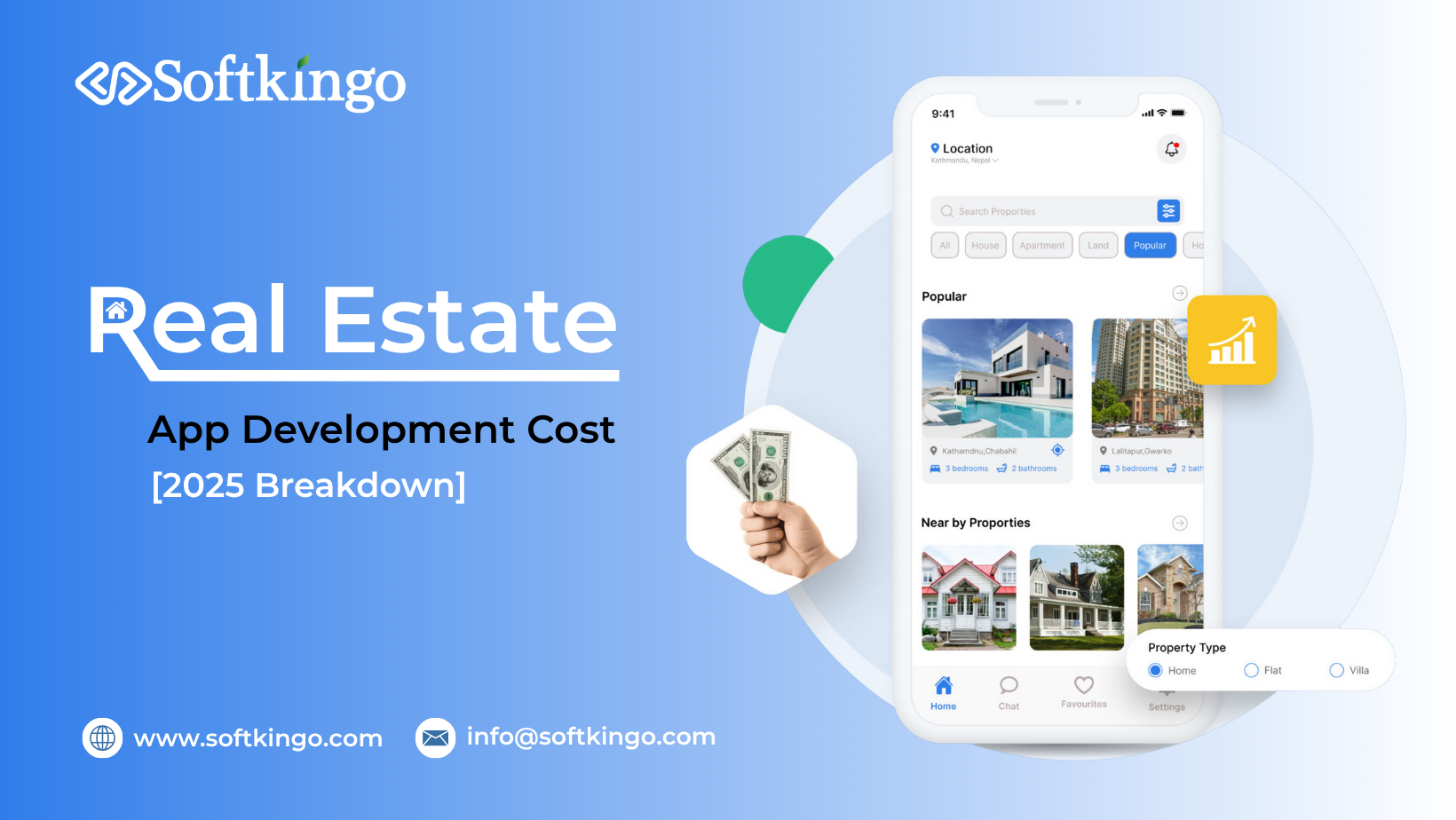
The ride-sharing industry is moving at a much faster rate. Being in the presence of the big names like Uber, Lyft, and Bolt, there are major challenges that existing ride-sharing apps cannot solve. Hence, it is a window of opportunity for your ride-sharing app idea to make a significant impact.
- High surge prices & increased fare
- Longer wait times and ride cancellations
- Issues with safety checks
- Issues with driver behavior and service delivery
- Unexpected fees and surcharges
- Bad customer support and ineffective complaint handling
These challenges only make your investment for the development of an Uber clone app more lucrative. But also consider the following statistics, indicating further opportunities for your app to make a considerable impact on the industry.
The huge demand for new ways to delight riders in the present is ripe for your app to come in with something that really satisfies the needs of riders and drivers alike.
Hence, in this blog, you will learn the working of ride-sharing apps, their must-have features, exclusive features to set yourself apart from competition, and the cost of creating your own ride-share app.
How does a ride-sharing app work?
Surely some of these popular existing ride-sharing apps have been used or at least heard of at some point in your life. Hence, we put together the entire rider journey to give you a feeling of what it looks like.
User Registration/ Profile Setup
- New User: The user downloads an application from Play or App Store. Then they add on the details for eg: Name, DOB, Mobile Number, Payment Method.
- Existing User: The app saves the credentials of existing users; the name or email ID, password, address, payment method, and ride history, so the users do not have to fill in all the details once they log back in.
Ride Request Initiation
Once logged in, the forthcoming step for the user would be to search for a pick-up location and finally the destination. The worthy feature here is that you could implement a voice command, requiring no typing, thus giving a user-friendly and comfortable process.
Driver Matching
Once a rider enters the pick-up and drop-off locations, the request is submitted to the app, which then checks for the closest possible driver using an algorithm apt to consider feasibility, proximity, distance, and traffic conditions.
The driver's panel shows the Commission they will receive upon successful completion of the fare and be given an option to accept or decline.
Ride Confirmation and Details
After the acceptance of the ride by the driver, the driver's information is made available on the ride screen, including the driver's name, vehicle number, and model; driver's phone number; route preview; estimated time of arrival.
Pickup & Ride Progress
After a driver arrives at the designated location, the rider must enter a time-sensitive OTP before the trip shall officially take place. As soon as the trip begins, the rider will get route updates, navigation updates, and real-time traffic updates.
Ride Experience
Equally important is the ride experience as that is what makes your ride-sharing app preferred above others. A dynamic ride experience, for example, would be music preference, chat option (to communicate with drivers), and comfort options.
Ride Completion & Payment
Once the rider reaches the destination, the driver finishes the ride on the app. The fare is then calculated by the ride-sharing app. In the past, fares are calculated on factors such as peak hours, time, price surge, distance, and tolls. But from now on, only one method exists: fixed fare. It is of benefit to the riders because drivers simply cannot cheat them; hence, it is assuredly a secure and fair payment option.
Also, riders get to select from diverse payment options, namely:
- In-app wallet
- Cash on delivery
- Credit or debit card
- Ratings and Reviews
Once the ride has been completed and the payment is made to the driver, both parties should rate and review each other.
Drivers will review and rate riders based on their behavior, while the latter rate drivers on various factors such as professionalism, the condition of the vehicle, driver attitude, and the quality of the driving experience.
Driver’s Earning
Once the rider pays, it is automatically transferred to the driver’s bank account after the ride-sharing app deducts their commission, usually 15%-25%.
Now that you know the journey of a rider and driver in the ride-sharing industry-specific application. Let’s discuss the stakeholders’ expectations for your ride-sharing app development idea.
| Admin | Driver | Rider |
|---|---|---|
| Independent cab-sharing services provider | Independent cab-sharing services provider | Daily commuters |
Functionality
| Functionality
| Functionality
|
So, these were some of the core functionalities of each stakeholder of the ride-hailing app. You must have heard or could have experienced Uber, but do you think that’s the only ride-sharing application in the market? Well, there are tough competitors to Uber, but they all sail in the same boat.
5 Best Ridesharing Apps
Below are the top ride sharing apps you must know about, and for your convenience, we’ve mentioned their pros and cons. Keep a close on each disadvantage and devise a solution; your ride-sharing app will have many users.
Uber
About: Established in 2009 with exclusive services like UberPool, UberBlack, UberX
Number of Active Users: 161 Million active users
Operational Regions: 70+ countries & 9000+ cities
Monetization model: Commission-based models (15%-30%)
| Pros | Cons |
|---|---|
| Wide availability and brand recognition. | Faces regulatory challenges in various regions. |
| Wide availability and brand recognition. | Faces regulatory challenges in various regions. |
Lyft
- About: Founded in 2012, serving only North America
- Number of Active Users: 44 Million
- Operational Regions: 600 cities in the United States and Canada
- Monetization model: Commission-based model
| Pros | Cons |
|---|---|
| Focuses on driver and rider satisfaction | Operates only in North America |
| Transparent pricing and driver tipping options | Quite a smaller market as compared to its peers |
Ola
- About: Launched in 2010, offering services like OLA Micro, Mini, and Prime
- Number of Active Users: 200 Million
- Operational Regions: India, Australia, New Zealand, and United Kingdom
- Monetization model: Commission- and subscription-based model
Grab
- About: Launched in 2012, offering food delivery services and digital payment while being Southeast Asia’s leading ride-sharing company.
- Number of Active Users: 37.7 Million
- Operational Region: South East Asian Countries (Mainly Singapore, Malaysia, Indonesia, and Thailand)
- Monetization model: Commission-based model
| Pros | Cons |
|---|---|
| Super app offers several other services than ride sharing | Too many new ride-sharing companies in the local market to deal with |
| Dominance in local markets | Regulatory challenges |
Bolt
- About: Established in 2013, offering car and two-wheeler hailing & food delivery services.
- Number of Active Users: 150 Million
- Operational Regions: 50 countries across Europe, Asia, Latin, and America
- Monetization model: Commission-based model
| Pros | Cons |
|---|---|
| Competitive pricing strategy | Varying service quality leading to brand impact |
| Multiple services offering, including food delivery, micro-mobility, and ride-hailing | Regulatory challenges leading to an increase in operational costs |
Features of Ride Sharing App (Stakeholder Wise)
Whatever be the case with an uber app-build where put side for riders and on the other side for drivers, some indispensable features need to be had in any of these put side.
Some of the must-have features in ride-sharing apps you should know if you are looking into how to build a ride-sharing app.
User Registration and Account Management
The first and foremost requirement when you create your own rideshare app is a registration page. It allows for a user to register himself by inputting information into the app. Of course, the registration process has to be simple.
For Riders
An appropriate way of making the registration process easy for the rider is to allow him/her to sign up via already existing accounts, like Google, Facebook, or Apple. In addition to this, he/she may sign up using an email ID or a mobile number.
In cases where the more important details such as first name, last name, and payment method are to be completed the rider can undertake such activities after registering, i.e., during profile completion.
For Drivers
Unlike the riders who can just register on the app, drivers need approvals from the rideshare company. For that, you could be asking for driver information such as a tax verification number, their name, contact information, and any other information that might have to be considered extremely important by the rideshare company for approving the driver to work for the company.
Note: The important information that may be required can vary from country to country.
Furthermore, the profile set up would require the rider to enter information such as a photograph and their working schedule.
Geolocation and Map Integration
These prevent the users from having to type into the system the pick-up locations manually; the drop would, however, require entering. Further, the integration of maps and geolocation would serve the following:
Exact matching of ride
Route map creation automatically
Finding shortest route possible
Finding distance for fare calculation
Tracking in real time
Fetching the exact location of the driver
Navigation to drivers
ETA Calculation (Estimated time of arrival)
Ride Request and Matching Algorithm
After the riders have added their locations for pickup and drop-off, the next step in building a ride-sharing app would be enabling them to request a ride.
Geolocation integration should not stop there; imagine making that migration algorithm a strong suit that gets the rider connected with the ride that is closest to his present location.
Make sure that the app shows the various kinds of automobiles and their prices based on the distance of the trip and the respective price of that automobile type. Doing this would ease the ride-requesting process by putting the rider in the know about pricing and automobile kinds.
In-app Communication Between Riders and Drivers
After selecting the ride from the nearest rides available, the next feature that would enable the driver or riders to communicate until the driver arrives are various options of in-app communication like chat and audio calls to discuss the itinerary specifics or for the drivers to inform their arrival.
Fare Estimation and Payment Processing
Depending on the following factors, the fare of the rider’s ride is estimated:
- Routes
- Types of vehicles
- Traffic conditions
Ensure that the fare estimation is done before the rider requests the ride; this way, the rider will be clear about the fare before sharing the ride.
To offer riders ease of payment, most ride-sharing apps integrate with in-app third-party gateways for secure and quicker payment processing: PayPal, Stripe, Braintree, etc.
Driver & Rider Rating and Feedback System
The ride-sharing company needs to know if the driver is doing their job correctly or not through the rider’s feedback/reviews and ratings. The rider reviews also give insights into drivers’ driving skills and behavior.
This is true for riders who should be banned from using their services; this is where the driver’s reviews and ratings play a crucial role.
Stand Out Your Ride Sharing Application from Competition (Exclusive Features)
In the crowded ride-sharing industry, only those that meet riders’ expectations survive. Considering the rider’s ease and how you can provide the service, we have listed some exclusive features you can integrate into your ride booking application.
- AI-Voice Assistant Ride Booking
No more typing! Make your riders’ lives easier by allowing them to book rides easily with voice commands.
- AR-based in-app Navigation Feature
Don’t let your rider struggle in crowded places. Try the AR-based navigation feature to help your rider locate the driver without hassle.
- AI-based Suspicious Activity Detection
Integrate an AI-enabled suspicious activity detection feature in your rideshare app to make users feel relaxed about suspicious situations and believe they can count on you.
- Panic Button & Live Streaming
This feature in your ride-share app lets your users know that your emergency contacts and services will be notified even in an emergency.
- Voice-backed SOS
A pre-set voice command triggers an emergency alert without unlocking the phone. This feature in your ride-carpooling app can build trust and boost your brand image.
- Rewards & Gamification
Let your riders and drivers earn rewards and points upon referring their family and friends to your ride-sharing application.
- AI-Supported Fare Prediction
There might be times when fares peak. In such cases, in-app notifications will proactively notify users of the best time to book the ride. They can even suggest early booking to avoid fare surges.
Ride Sharing Application Development Process
A ride sharing app development process involves a predefined set of steps, including industry research, technological requirements for developing and selecting the business model, and defining features. Sit tight and follow each step, as we have answered all the whys below.
Industry Research & Business Model Selection
Any mobile application development requires thorough market research of existing carpooling platforms like:
- Ride share app ratings
- Driver & customer reviews
- Features
- User interface and experience of each uber-like app
- Application flow & functionalities
- Target audience (be specific about your target audience)
Connect with a ride sharing app development company to learn market insights. Or, if your targeted location is flooded with ride-share platforms, you can conduct surveys to know which is the rider’s favorite.
Setting up Features & Functionalities
| Category | Admin | Rider Features | Driver Features |
|---|---|---|---|
| User Management | Manage rider & driver profiles | User registration & profile management | Driver registration & document verification |
| Ride Booking & Matching | Ride requests allocation & management | Book a ride instantly or schedule a trip | Accept or decline ride requests |
| Real-Time Tracking | Monitor rides in real-time | Live GPS tracking of driver | Turn-by-turn navigation assistance |
| AI & Automation | AI-driven ride matching & demand prediction | AI-powered fare estimation & route optimization | AI-suggested best available routes |
| Payment & Transactions | Manage fares, commissions & payouts | Multiple payment options (Card, Wallet, Cash) | Earnings dashboard & automatic payouts |
| Safety & Security | Monitor suspicious activities | Panic button & live location sharing | Driver verification & checks |
| Voice & AR Features | Voice-based admin commands for faster operations | AI-voice assistant for hands-free booking | AR-powered navigation for better routes |
| Notifications & Alerts | Automated system alerts & ride status updates | Real-time ride status notifications | New ride request notifications |
| Reviews & Ratings | Monitor and manage user feedback | Rate drivers & provide ride feedback | View rider ratings & feedback |
| Promotions & Rewards | Monitor and manage user feedback | Rate drivers & provide ride feedback | View rider ratings & feedback |
| Fleet & Vehicle Management | Manage driver availability & fleet tracking | Select vehicle type (Standard, Luxury, Pool) | Set vehicle availability & maintenance status |
| Customer Support | 24/7 admin support & complaint resolution | In-app chat & customer support | In-app chat & issue reporting |
| Analytics & Reporting | Generate ride reports, revenue analytics, & heatmaps | View ride history & past transactions | Earnings summary & trip analytics |
Technological Requirement
Before you decide to develop a ride-share app, you are left with alternative options: native or hybrid. Each has its pros and cons, but in a nutshell, native apps are built and run on specific platforms: either iOS or Android. On the contrary, hybrid apps run seamlessly on both platforms.
UI/UX Design and Prototyping
The need for prototyping arises in workflows as you need to know how exactly an end product will look like-whether some adjustments are needed or some other features can be integrated into the ride-share application. A prototype gives directions about screen layouts, expectations of usability, and app flow. If you are confused about UI/UX trends, check out our whole blog.
The fundamental advantage of an MVP, prototyping, or wireframing is detecting all errors or flaws at the pre-launch stages. This saves time during the final ride-share app development, and the app can go out in the market immediately.
App design should be intuitive and user-friendly to capture the customers. You can better evaluate the appealing application design by collaborating with a carpooling app development company.
API Integration & Development
A seamless API integration is necessary to apply other functions in a rider-sharing application. It would involve GPS and maps systems (Google Maps, Mapbox), payment gateways (Stripe, PayPal), and authentication systems (OAuth, Firebase Auth). Development of robust APIs will give the perfect interface for the frontend of the application, the backend of the application, and third-party services to communicate, which helps in enhancing the experience of the user and the application in general.
Testing & Quality Assurance
Stressful and exhaustive testing and quality assurance are what put into an application that is free from all bugs and uncertainties. It includes functional testing, performance evaluation, security audits, and user experience testing to capture any loopholes and fix them. Employing both manual and automated tests will help build a reliable performance-app that stands tall on the standards set by the industry.
Deployment & Launch
After testing the app, the app entered its production environment and was published in the stores (Google Play and Apple App Store). This means database administration, cloud hosting, and server-side infrastructure that can effectively process real-time ride requests must be set up. A platform must be adhered to concerning its requirements. Performance optimization must also be done to have a smooth launch.
Support & Scalability
Post-launch, continuous support and scalability are necessary to maintain app performance and accommodate growing user demand. Regular updates, bug fixes, security patches, and feature enhancements ensure a seamless user experience. Additionally, implementing scalable cloud solutions allows the app to handle increasing traffic, expanding its reach without performance bottlenecks.
How Much Does Ride Sharing App Development Cost?
Here’s a tabular breakdown of estimated hours for developing a ride-sharing app based on stakeholders, functionalities, and development stages. Review and let us know if you have any doubts or queries.
| Modules | Functionality | Development Stage | Estimated Time |
|---|---|---|---|
| Riders | User registration, profile creation | Planning & Research | 40 – 60 hours |
| Ride booking & scheduling | UI/UX Design | 60 – 80 hours | |
| Fare estimation | Backend Development | 40 – 60 hours | |
| Real-time ride tracking | Frontend Development | 80 – 120 hours | |
| Payment gateway integration | Testing & QA | 60 – 100 hours | |
| Ratings & reviews | Deployment & Maintenance | 30 – 50 hours | |
| Drivers | Driver registration & document verification | Planning & Research | 50 – 70 hours |
| Ride request acceptance/rejection | UI/UX Design | 50 – 80 hours | |
| Navigation & route optimization | Backend Development | 80 – 120 hours | |
| Earnings tracking & payout management | Frontend Development | 80 – 100 hours | |
| Ride history & reports | Testing & QA | 40 – 60 hours | |
| Admin (Company) | Dashboard for managing drivers & passengers | Planning & Research | 80 – 100 hours |
| Trip monitoring & analytics | UI/UX Design | 60 – 90 hours | |
| Fare & commission management | Backend Development | 80 – 120 hours | |
| Customer support & dispute resolution | Frontend Development | 50 – 80 hours | |
| Marketing & promotional tools | Testing & QA | 40 – 60 hours | |
| Other Costs(Company) | Third-party API integrations (Maps, Payment) | Various Stages | 100 – 150 hours |
| Server & cloud infrastructure | Deployment & Maintenance | 100 – 200 hours | |
| Security & Compliance | Security Audits & QA | 80 – 150 hours | |
| Post-launch support & updates | Ongoing Maintenance | 80 – 150 hours/month |
Support & Scalability
Support and scalability are required post-launch so that the app keeps performing well and meets the demands of companies in need of it. Regular updates and maintenance, including bug fixes and security patches that add new features from time to time, make for a smooth user experience. At the same time, cloud solutions need to scale royalty-wise so that the app can handle increased traffic and further spread its wings without bottlenecks in performance.
How Much Does It Cost to Develop a Ride Sharing App?
The following table outlines, by stakeholders, functionalities, and development phases, the approximate hours it takes to develop a ride-sharing app. Go through it, and feel free to ask if you have any doubts or queries.
So, hire ride-share developers and get your idea developed, seen, and corrected.
Total Estimated Development Time:
1,250 – 2,500+ hours (depending on complexity, size of the team, and region)
Now, just multiply that above figure with the hourly charge of developers, and you shall have a rough estimate for your ride sharing app. Keep in mind, the budget may very; in that case, contact the ride sharing app development company before finalizing your decisions.
How to Monetize Ride Sharing App?
Through monetization of your ride-sharing app, you are going to generate profits and hence develop your business. Because there are several monetization models, sometimes it becomes confusing to choose the right one for your business, and therefore, the decision to offer plenty of information for a monetization model was made by us:
Commission-Based Model (The Good Old Fashioned Way)
Traditionally, the ride-sharing mechanism must naturally put a fee each time a ride is given. For instance, Uber and Lyft charge roughly 20% to 30% of the total fares. As a ride-share app owner, you will hence be setting up a fee for every walk done. You need to strike the right balance with your commission rates so that riders and drivers do not switch to another more profitable ride sharing platform.
Surge Pricing: Earn When the Demand is High
Have you ever noticed that prices surge higher when the weather turns bad or the city becomes steamy in the rush hour? That is surge pricing for you. This algorithm-based mechanism raises the fare when demand for rides surpasses the supply of willing drivers, thereby maximizing revenue, and encourages more drivers to join in.
Subscription for Drivers (Stable Income Model)
Another model pays you by offering driver subscription plans rather than a commission on each ride. For example:
- Weekly or monthly plans: Drivers pay a fixed fee to use the platform.
- Freemium model: Offers basic rides for free; advanced options (like priority ride requests) come at a cost.
This option will stabilize the investments for the drivers while keeping the revenues steady for you.
Ride Passes & Memberships for Riders
Both Uber and Lyft offer their customers monthly ride passes, charging a fixed amount on which discounts are given for all rides. Such a policy binds a user to it and assures a continuous revenue flow even if the user seldom rides.
In-App-Advertising (Advertising While Users Scroll)
Our app can function as a digital billboard, displaying adverts for restaurants, retail stores, and various other businesses. Monetization avenues can include:
- Banner ads on the home screen of the app.
- Sponsored listings
- Partnering with businesses that provide discounts for riders
- Corporate & Business Partnerships
A lot of companies offer ride-sharing benefits to their employees. You can get into hotel, airline, and corporate businesses for a business travel solution. For instance:
Corporate ride programs wherein businesses purchase discounted bulk rides for their employees.
Hotels and airports tie-ups for convenient transportation.
Carpooling & Payment by the Trip (More Trips, More Revenue)
Giving fellow passengers an opportunity to share a taxi allows riders to pay less while increasing the pickings of your platform per trip. Some apps like UberPool and Lyft Line do exactly this to optimize routing and maximize capacity.
Premium & Luxury Ride Options
High-end traveling experiences are what some customers look for. This is where luxury services that provide taxis, executive cars, or chauffeur-driven services stand to earn you much money through enticing high-paying users.
Delivery Services (Expand Beyond Ride-Sharing)
In many cases, ride-sharing apps provide services like food delivery or courier services and package transportation. Another way of making extra money is to keep the drivers busy during off-peak hours by allowing them to deliver food or parcels.
Extra Cancellation & Convenience Fees
A cancellation fee is requested should a passenger cancel a ride after a given time. Additionally, priority booking fees can be introduced in which users pay extra for ride-matching to be accelerated or for assured availability.
Conclusion
Ride-sharing apps have transformed urban transportation, offering a method of riding that is easy, cheap, and environmentally friendly. These platforms let passengers ride cheap and allow car owners to make some extra cash while maximizing fuel usage efficiency. Now is the time to launch your app as the ride-sharing industry is expanding every day.
You should be well aware of the important points of building a ride-sharing app, like features and revenue models. While leading platforms like Uber, Lyft, or Grab are holding the market in their grip, there is always some space for innovation that your application can mark with some good strategy and cater to a niche audience.
Have you got some ideas for a novel ride-sharing platform? We are experts in making high-performance and scalable applications, we have the expertise to bring your idea to life.
Contact us today—fill out the form below and create something exceptional together!
Paramhans Singh is the CEO and founder of Softkingo Technologies, bringing over 8 years of experience in delivering custom software solutions that help startups and enterprises achieve their business goals. He has successfully validated more than 220 app and website ideas and delivered over 100 tailored solutions, utilizing a range of technologies such as Swift, Kotlin, React Native, Flutter, PHP, RoR, IoT, AI, NFC, AR/VR, Blockchain, and NFTs.




